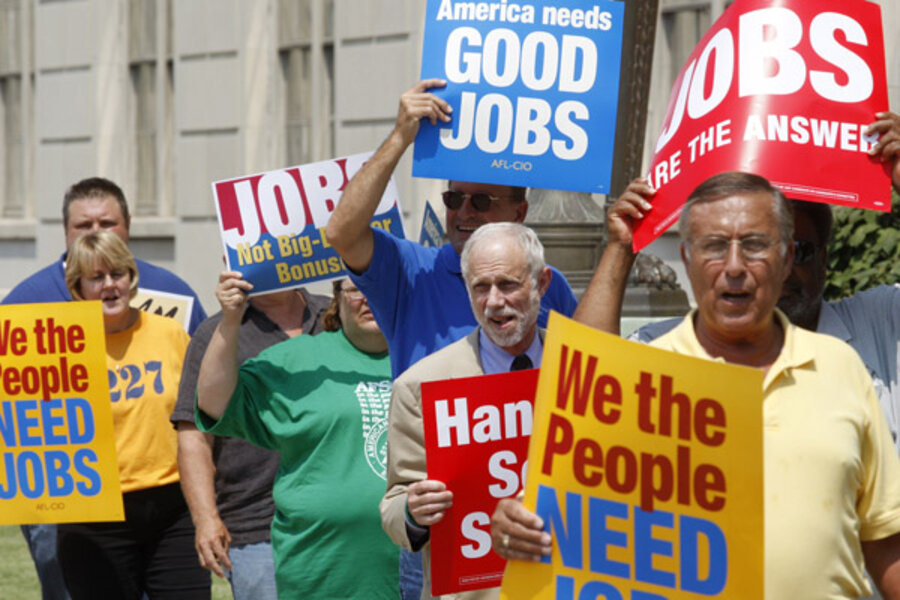Unemployment benefits: Why Obama keeps pushing to extend them
Loading...
For the second time in three days, President Obama urged the Senate on Monday to pass a $34 billion bill that would extend emergency unemployment benefits for 99 weeks in states with the highest unemployment rates through November.
The maximum unemployment insurance eligibility period has been increased five times since the start of the recession in 2008 for people who'd been out of work for six months or longer. The 99-week maximum was set last November, and had been extended in small increments until June, when the Senate failed to fund the extension through November. Since then, some 2.2 million people have lost benefits, according to the Department of Labor.
Unemployment extensions have been granted six times since 1958, when the program was begun. Today's maximum has reached unprecedented levels. In 2003, unemployed airline workers were eligible for 52 weeks of benefits. The previous temporary extension in 1992 granted unemployed workers up to 59 weeks of unemployment payments for a period of four months.
Yet, in 1983, when peak unemployment rates reached 10.8 percent (the high during this recession reached 10.1 percent in late 2009), unemployment benefits were available only for a maximum of 42 weeks.
So why do today’s unemployed need nearly two years of unemployment benefits?
Because “this recession is so different than anything we’ve seen previously,” says George Wentworth, policy analyst at the National Employment Law Project. “We’ve never had long-term unemployment in anything approaching the current levels.”
In June the long-term unemployed – those out of work for more than six months – reached 45.5 percent of the country's unemployed workers. In 1983, those without work for that long peaked at 26 percent.
“Usually when you’re this far into a recession, or a ‘recovery,’ it should be easier for people to find jobs," says Mr. Wentworth. "But that’s just not the case."
Some studies though, (PDF) show that unemployment lengthens when unemployment benefits are extended.
In June, there were about five job seekers for each job opening, according to the Department of Labor.
That means that the vast majority of those whose benefits are expiring will have to look for other forms of aid to make ends meet, says Wentworth, either through community resources or state programs, like food stamps and cash assistance through Temporary Assistance for Needy Families, or TANF.





